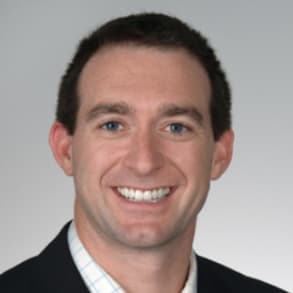Medication isn’t always successful for people with major depressive disorder, but TMS can help. Baron Short, M.D., MSCR , is the medical director for MUSC Health’s Brain Stimulation Service, and he says patients report more energy and an elevated mood almost immediately after this minimally invasive treatment.
So TMS stands for Transcranial Magnetic Stimulation. It's FDA approved for Major Depressive Disorder in 2008 for O CD in 2018 and smoking cessation in 2020 most people getting T MS these days are for major depressive disorder. Most people seeking treatment for major depressive disorder usually will start with talk therapy or medication. But once medications have not been effective, they usually will translate to TMS. We have to remind ourselves that the brain is an electrochemical organ. So we're used to taking pills to change the brain chemistry, but we can actually directly change the electrical firing of the brain through non invasive methods such as TMS. That's where we run an electric electrical current through a magnet. It produces an electromagnetic pulse goes through the skin muscle bone, it touches the brain and actually activates brain tissue. MS E was the first to offer transcranial Matic stimulation in the state of South Carolina. We were the first to use TMS for major depressive disorder. The first to use TMS for obsessive compulsive disorder and the first to use TMS for smoking cessation, which T MS is FDA approved for all three of those conditions. So when someone is going to start TMS for their first session, we will usually have them come into our clinic, get into the TMS chair, we will then do what's called a motor threshold where we will find the specific brain dose for each individual, putting the coil over the middle, top part of the head and finding the dose needed to make the thumb twitch, which is pretty fascinating because almost nowhere else in medicine, can you find the specific dose for a specific organ of a person for an actual treatment? Once we find that motor threshold, we will move the coil into the left front part of the head to actually stimulate a brain region called the dorsal lateral prefrontal cortex. The reason we treat there that brain region tends to be underactive in depression. So we're literally reactivating this brain region repetitively usually 3000 pulses per session. What it feels like for people, they'll usually feel this tapping sensation on the head. The muscles right around the side of stimulation will twitch a little bit. Occasionally people could feel a nerve in their face or a tooth, but generally, it's quite tolerated. It gets easier as people initiate treatment. First session is like a little bit harder. It gets easier as people go as the brain actually adapts to the stimulation. What I find so fascinating about T MS is that this is really 21st century neuropsychiatry. So we're, we're literally able to say that the brain is underactive in these frontal brain regions. And then we can more focally stimulate those brain regions without significant side effects. And over a matter of weeks, just literally watch people lift out of depression. Uh Almost every week. I have someone say to us, thanks for saving my life or thanks for saving my wife or husband or daughter or son's life. It's just immensely gratifying, particularly when people have not found relief elsewhere and we can do it in this very clean, efficient way. Um It's, it's the best thing ever.





